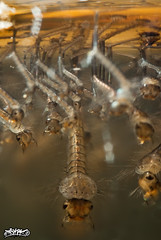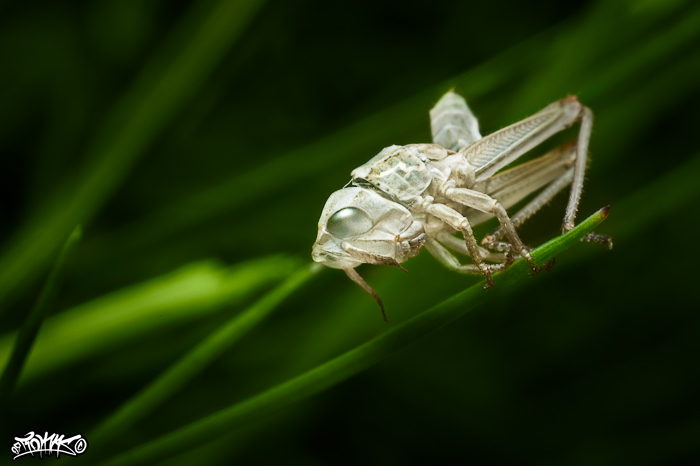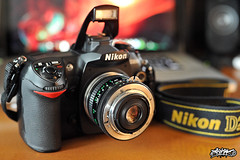 Culicidae! Or more widely known to the world of fly fishing, as buzzers.
Culicidae! Or more widely known to the world of fly fishing, as buzzers.I took these photo's with my reverse lens macro set up. The lens is an old MF Vivitar 24 f/2.8 film lens, bought for £40/50€ from ebay, UK and it's attached to the camera via a Nikon BR2A reverse ring bought for around 35 euros from www.digitarvike.fi.
Reverse lens macro is a very effective alternative to the more expensive lenses. The most common lenses to use in reverse are 50mm and 24mm primes.
When using a reversed 50mm prime lens the magnification is equal to a dedicated macro lens at 1:1 life size. When using a 24mm prime lens the total magnification is nearly 3 x life size. These magnifications can also be increased by using extension tubes.
 Reverse lens macro requires full manual control and is also a much more difficult method than using a dedicated macro lens set up.
Reverse lens macro requires full manual control and is also a much more difficult method than using a dedicated macro lens set up. To achieve good depth of field you will need to be shooting at apertures of f/11 to f/16, often the most narrow of apertures available with such prime lenses.
This causes the view finder to become very dark and difficult to achieve accurate focus.
 However, Nikon camera's and NIkon fit lenses have a small aperture lever next to the rear element of the lens, if this lever is flicked and held upward, the aperture blades open up, allowing much more light through so you focus correctly, usually this means moving yourself (and the camera) either forwards or backwards and then releasing the lever before you take the shot.
However, Nikon camera's and NIkon fit lenses have a small aperture lever next to the rear element of the lens, if this lever is flicked and held upward, the aperture blades open up, allowing much more light through so you focus correctly, usually this means moving yourself (and the camera) either forwards or backwards and then releasing the lever before you take the shot. Tricky to master but a great alternative which also offers great magnification capability and remaining highly compact and lightweight.
Tricky to master but a great alternative which also offers great magnification capability and remaining highly compact and lightweight.Flash is vital ingredient in macro photography. These shots were taken with a single Nikon SB-800 speedlight, attached via an off camera cord and mounted to a Manfrotto macro bracket.
 Here is a Nikon D200 with BR-2A reverse ring and a manual focus Vivitar 24mm.
Here is a Nikon D200 with BR-2A reverse ring and a manual focus Vivitar 24mm.Lenses are mounted to the reverse ring via the 52mm filter thread. You can mount lenses with filters threads very slightly larger and very slightly smaller with the aid of stepping rings.
The onboard flash is sufficient if a little lacking in power.
Click here for an example frame taken using the on board flash.
Diffusion is fairly important when using flash. When diffusing the onboard flash you can either use a piece of opaque white plastic like a milk carton or a sheet of white foam.
Flash guns or Speedlights have a variety of diffusion available from clip on diffusion domes or Stofen diffusers to small softboxes available in a range of sizes.
 I usually have an SB-800 mounted to a macro bracket and then attached to the camera's hot shoe via a Nikon SC-28 extension cord as this has much more power and can sync at faster shutter speeds.
I usually have an SB-800 mounted to a macro bracket and then attached to the camera's hot shoe via a Nikon SC-28 extension cord as this has much more power and can sync at faster shutter speeds.Recommended resources:
Mark Dijstelberge Photography
Interview with Alby Oakshott
More macro on Flickr


0 comments:
Post a Comment
>> Home